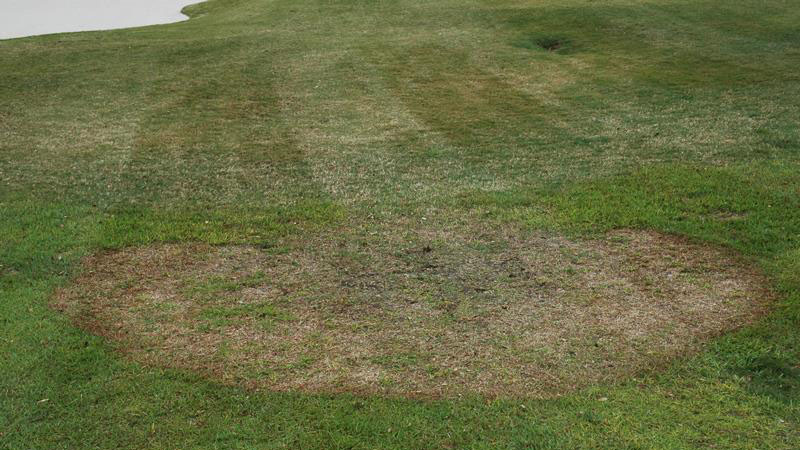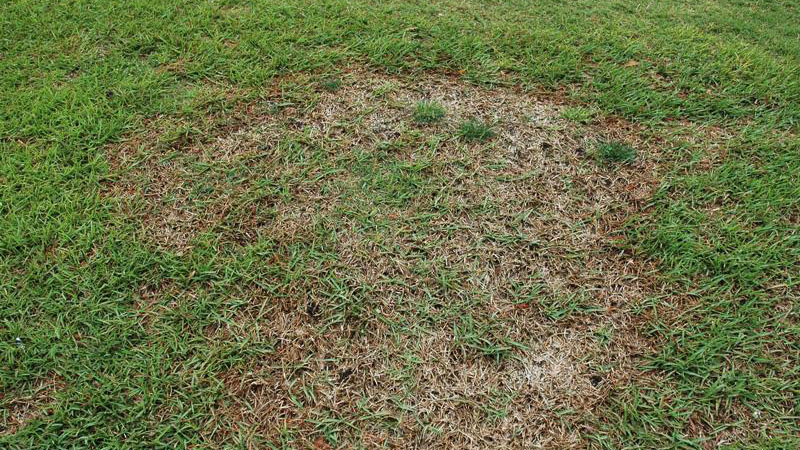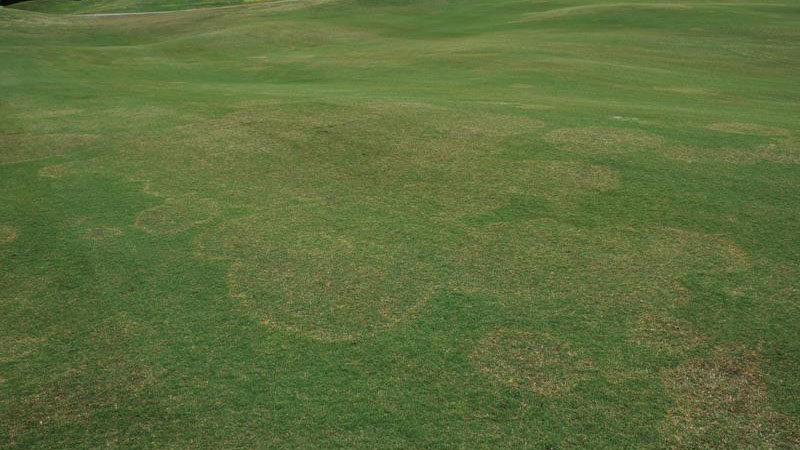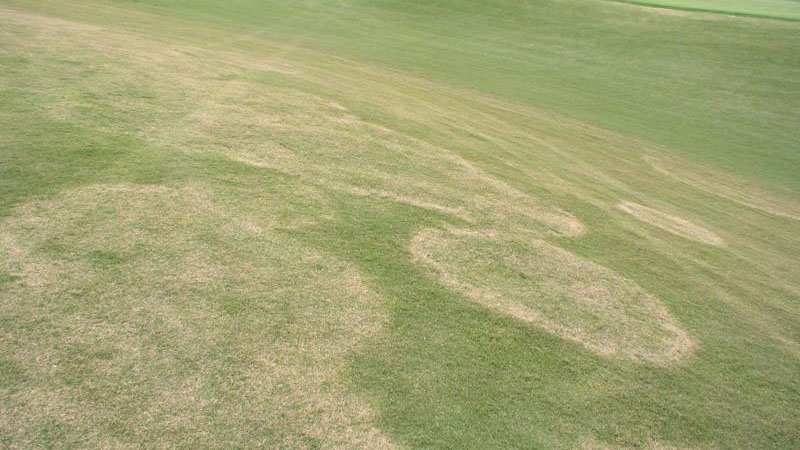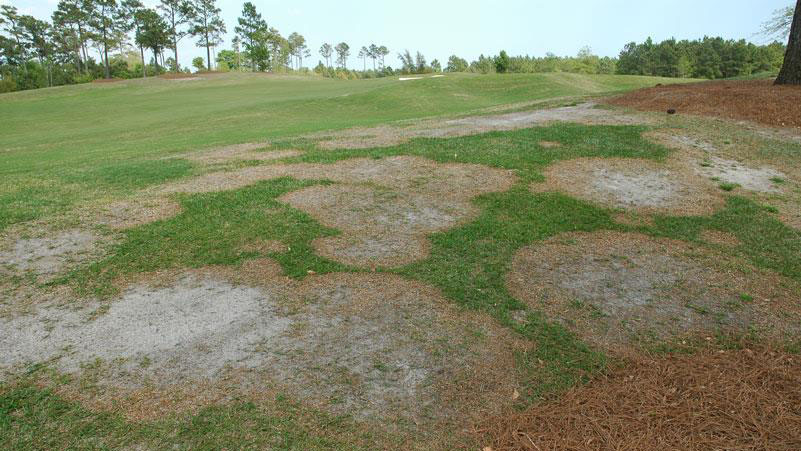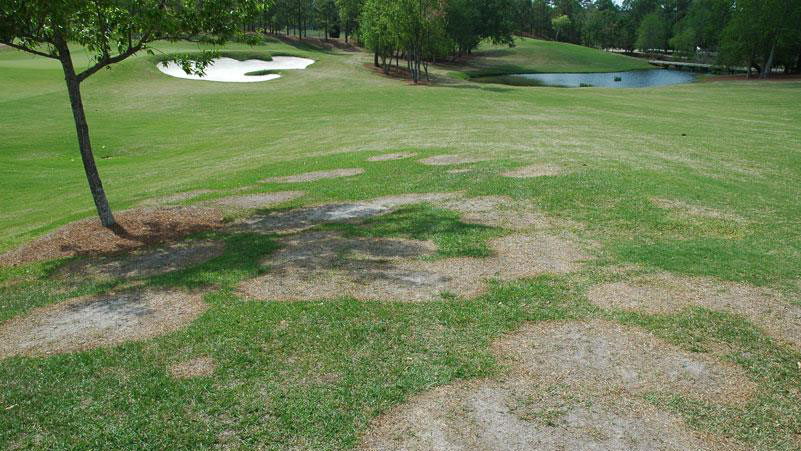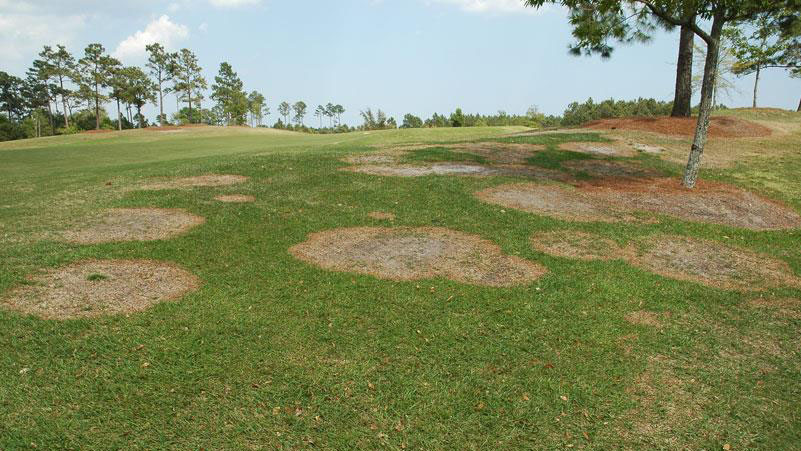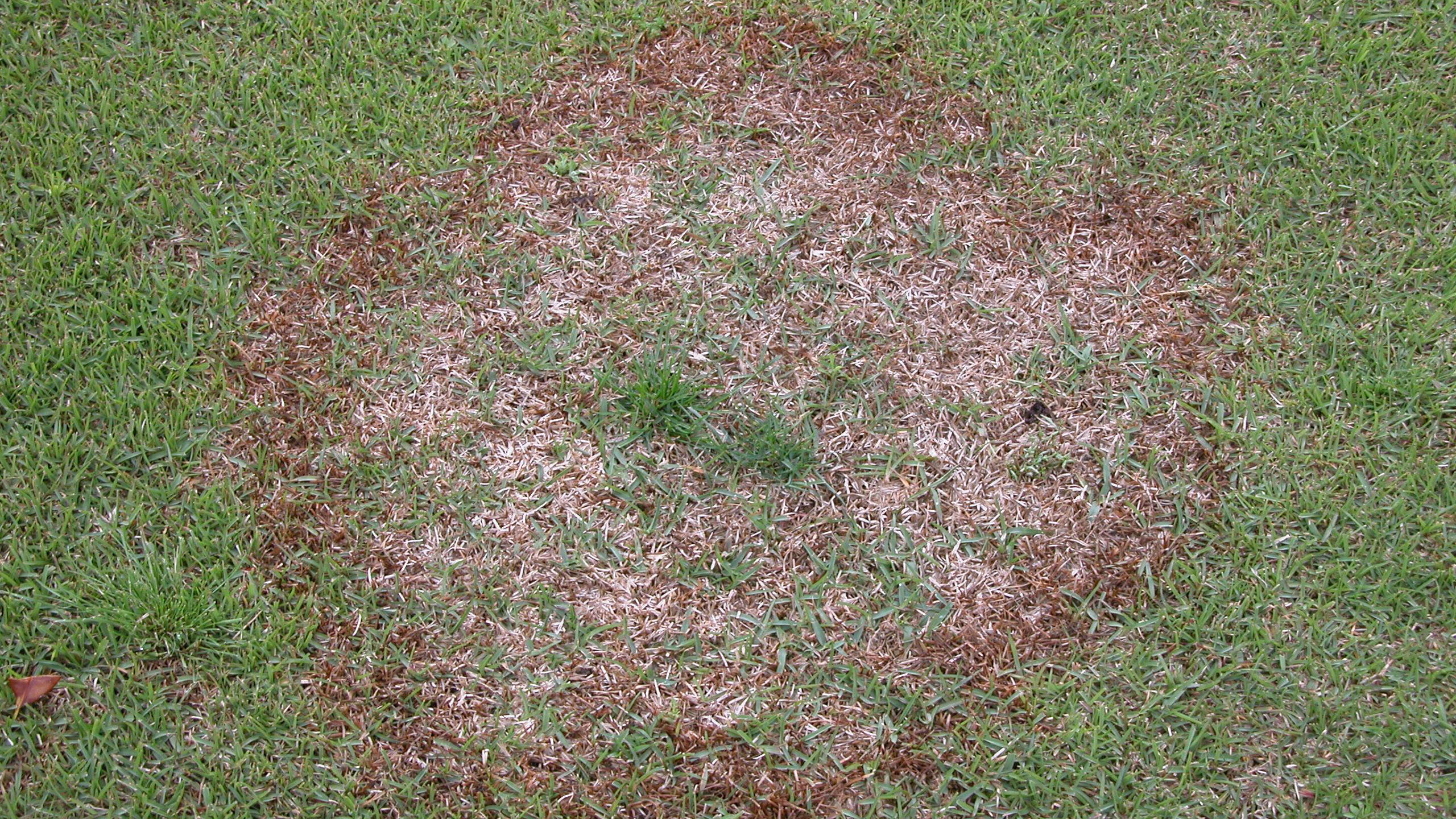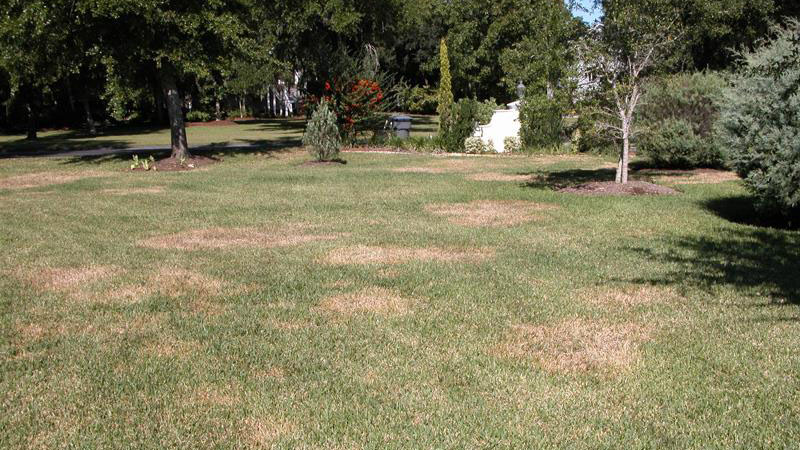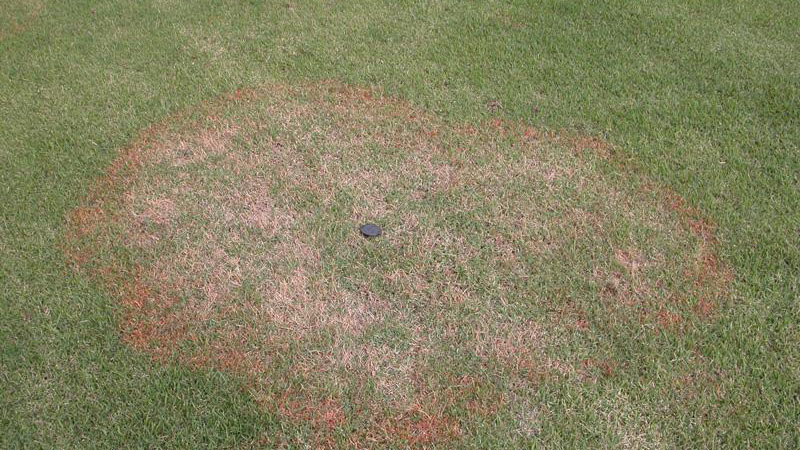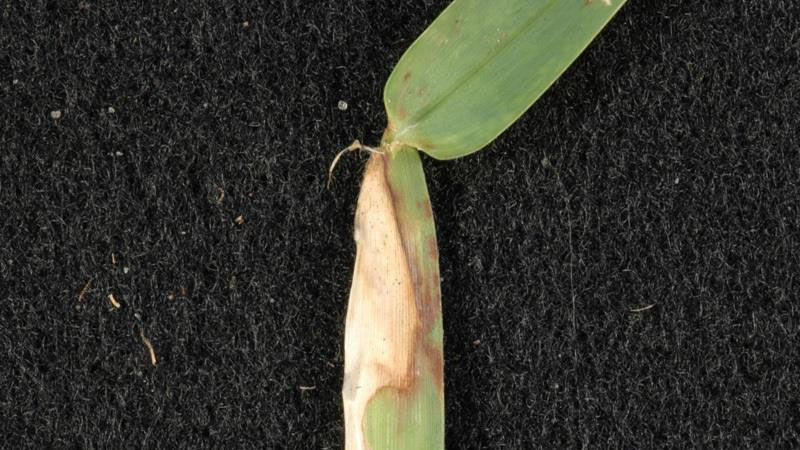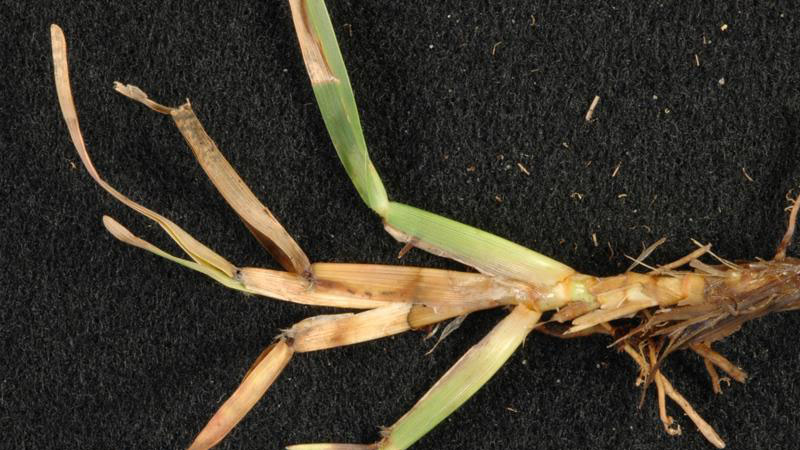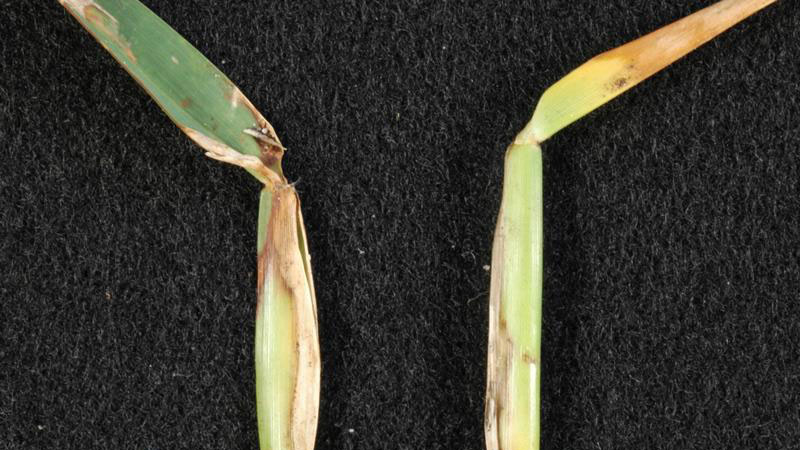Large Patch in Turf
en Español / em Português
El inglés es el idioma de control de esta página. En la medida en que haya algún conflicto entre la traducción al inglés y la traducción, el inglés prevalece.
Al hacer clic en el enlace de traducción se activa un servicio de traducción gratuito para convertir la página al español. Al igual que con cualquier traducción por Internet, la conversión no es sensible al contexto y puede que no traduzca el texto en su significado original. NC State Extension no garantiza la exactitud del texto traducido. Por favor, tenga en cuenta que algunas aplicaciones y/o servicios pueden no funcionar como se espera cuando se traducen.
Português
Inglês é o idioma de controle desta página. Na medida que haja algum conflito entre o texto original em Inglês e a tradução, o Inglês prevalece.
Ao clicar no link de tradução, um serviço gratuito de tradução será ativado para converter a página para o Português. Como em qualquer tradução pela internet, a conversão não é sensivel ao contexto e pode não ocorrer a tradução para o significado orginal. O serviço de Extensão da Carolina do Norte (NC State Extension) não garante a exatidão do texto traduzido. Por favor, observe que algumas funções ou serviços podem não funcionar como esperado após a tradução.
English
English is the controlling language of this page. To the extent there is any conflict between the English text and the translation, English controls.
Clicking on the translation link activates a free translation service to convert the page to Spanish. As with any Internet translation, the conversion is not context-sensitive and may not translate the text to its original meaning. NC State Extension does not guarantee the accuracy of the translated text. Please note that some applications and/or services may not function as expected when translated.
Collapse ▲Symptoms
Large patch is a new name for an old disease of warm-season turfgrasses. This disease was formerly called brown patch, the same disease that affects cool-season grasses during hot weather. Other than the fact that they affect different grasses, there are several important differences between brown patch and large patch that necessitated a name change: they occur at different times of the year, produce distinct symptoms, are caused by different strains of the fungus Rhizoctonia solani, and require very different control strategies.
Development Factors
Large patch begins to develop when soil temperatures decline to 70°F in the fall, but the symptoms do not necessarily appear at this time. The symptoms of large patch are most evident during periods of cool, wet weather in the fall and spring. In many cases, symptoms may not become evident until early spring when the warm season grasses are greening up.
Large patch is favored by excessive nitrogen in the fall and spring, poor soil drainage, over-irrigation, excessive thatch accumulations, and low mowing heights. Centipedegrass and seashore paspalum are most susceptible to large patch, followed by zoysiagrass, and then St. Augustinegrass. Bermudagrass, rarely affected by large patch, recovers very quickly when the disease does occur.
Cultural Control
Establishment of a disease-resistant turfgrass species is the most effective means for management of large patch. Bermudagrass rarely sustains significant damage from large patch, and grows of out the symptoms quickly when the disease does occur. In contrast, centipedegrass, seashore paspalum, St. Augustinegrass, and zoysiagrass often sustain serious damage and recovery can take several weeks or months. Fescues and bluegrasses are immune to large patch and are also an option in areas where cool-season turfgrasses can be maintained.
Do not apply nitrogen to warm-season grasses in the fall and spring. These grasses are growing slowly during this time and do not require a significant amount of this nutrient. In general, nitrogen should not be applied to the warm-season grasses within 6 weeks before dormancy in the fall or within 3 weeks after green-up begins in the spring. Warm-season grasses vary in their fertility requirements, so refer to local university recommendations for more specific recommendations for timing and rates.
Avoid establishing warm-season grasses in low lying areas that remain saturated for extended periods of time from surface runoff. If this is unavoidable, install subsurface drainage to remove excess water from the soil. Irrigate only as needed to prevent severe drought stress in the fall and spring. Control traffic patterns to prevent severe compaction, and aerify as needed to maintain soil drainage and aeration. Mow at recommended heights, and power rake or vertical mow as needed to control thatch accumulations.
Chemical Control
Fungicides are available for large patch control, but must be applied on a preventative basis. For centipedegrass and St. Augustinegrass, applications should be initiated when soil temperatures decline to 80°F for 5 or more consecutive days, which could be mid-August in some years. For zoysiagrass, applications should be initiated in the fall when soil temperatures decline to 70°F for 5 or more consecutive days. Two well-timed applications may provide season-long control of large patch in many situations. In severely affected sites, repeat applications should be made on 4 to 6 week intervals as long as soil temperatures remain above 50°F in the fall. Fungicides should be applied in a water carrier volume of at least 2 gal per 1,000 square ft, higher water volumes (3+ gal/1,000 sq ft) or post-application irrigation of 1/8" will likely improve efficacy. Mapping of affected areas in the spring for spot-treatment in the fall can substantially reduce fungicide expenditures.
* Products marked with an asterisk are not labeled for home lawn use.
| Fungicide and Formulation1 | Amount of Formulation2 | Application Interval (Days)3 | Efficacy Rating | Resistance Risk | FRAC Code4 |
| azoxystrobin (Heritage) WG TL G |
0.2 to 0.4 2 2 to 4 lbs |
14 to 28 14 to 28 14 to 28 |
+++ | Low | 11 |
| azoxystrobin + acibenzolar-S-methyl (Heritage Action)* | 0.2 to 0.4 | 14 to 28 | +++ | Low | 11/P01 |
| azoxystrobin + chlorothalonil (Renown)* | 2.5 4.5 |
14 14 to 21 |
+++ | Low | 11/M5 |
| azoxystrobin + difenoconazole (Briskway)* | 0.5 to 1.2 | 14 to 28 | +++ | Low | 11/3 |
| azoxystrobin + propiconazole (Headway) EC G |
1.5 to 3 2 to 4 lbs |
14 to 28 14 to 28 |
++++ | Low | 11/3 |
| azoxystrobin + propiconazole (Compendium) | 1.3 to 2.6 | 14 to 28 | ++++ | Low | 11/3 |
| azoxystrobin + tebuconazole (Strobe T)* | 0.75 to 1.5 | 14 to 21 | ++++ | Low | 11/3 |
|
benzovindiflupyr + difenoconazole (Ascernity)* |
1.0 | 14 to 28 | ++++ | Low | 7/3 |
| chlorothalonil + fluoxastrobin (Fame C)* | 3 to 5.9 | 14 to 28 | +++ | Low | M5/11 |
| chlorothalonil + iprodione + thiophanate-methyl + tebuconazole (Enclave)* | 3 to 4 7 to 8 |
14 to 21 28 |
? | Low | M5/2/1/3 |
|
cyazofamid + azoxystrobin (Union) |
5.75 | 14 to 28 | +++ | Low | 21/11 |
|
fluindapyr + flutriafol (Kalida) |
0.25 to 0.4 | 21 to 28 | +++ | Low | 7/3 |
| fluoxastrobin (Fame) SC G |
0.3 to 0.4 2.3 to 4.6 lbs |
14 to 28 14 to 28 |
+++ | Low | 11 |
| fluxapyroxad (Xzemplar) | 0.21 to 0.26 | 14 to 28 | +++ | Low | 7 |
| flutolanil (Prostar) (Pedigree) |
2.2 3.25 |
28 30 |
++++ ++++ |
Low Low |
7 |
| flutriafol (Rayora)* | 0.7 to 1.4 | 28 | ? | Low | 3 |
| iprodione (26GT)* | 4 | 14 to 21 | ++ | Low | 2 |
| iprodione + thiophanate-methyl (26/36)* | 2 to 4 | 14 to 21 | ++ | Low | 2/1 |
| iprodione + trifloxystrobin (Interface)* | 4 | 14 to 21 | ++ | Low | 2/11 |
| isofetamid + tebuconazole (Tekken)* | 3 | 14 to 28 | ++++ | Low | 7/3 |
| mefentrifluconazole + pyraclostrobin (Navicon)* | 0.7 to 0.85 | 14 to 28 | +++ | Low | 3/11 |
| metconazole (Tourney) | 0.37 | 14 | ++++ | Low | 3 |
| myclobutanil (Eagle) | 2.4 | 28 (fall) | ++ | Low | 3 |
| penthiopyrad (Velista) | 0.7 | 14 to 28 | +++ | Low | 7 |
| propiconazole (Banner MAXX II) | 3 to 4 | early fall | +++ | Low | 3 |
|
prothioconazole (Densicor)* |
0.196 | 14 to 28 | +++ | Low | 3 |
|
pydiflumetofen + azoxystrobin + propiconazole (Posterity Forte)* |
0.84 | 14 to 21 | ++++ | Low | 7/11/3 |
|
pydiflumetofen + azoxystrobin + propiconazole (Posterity XT)* |
1.5 to 3 | 14 to 28 | ++++ | Low | 7/11/3 |
| pyraclostrobin (Insignia) WG SC |
0.5 to 0.9 0.4 to 0.7 |
14 to 28 14 to 28 |
+++ | Low | 11 |
| pyraclostrobin + boscalid (Honor)* | 1.1 | 14 to 28 | +++ | Low | 11/7 |
| pyraclostrobin + fluxapyroxad (Lexicon Intrinsic) | 0.34 to 0.47 | 14 to 28 | ++++ | Low | 11/7 |
| pyraclostrobin + triticonazole (Pillar G) | 3 lbs | 14 to 28 | +++ | Low | 11/3 |
| tebuconazole (Torque)* (Mirage)* |
0.6 to 1.1 1 to 2 |
21 28 |
++++ | Low | 3 |
| triadimefon (Bayleton) | 1 to 1.9 | fall and spring | +++ | Low | 3 |
| triticonazole (Trinity) |
1 to 2 |
14 to 28 |
++++ | Low | 3 |
| 1 Other trade names with the same active ingredients are labeled for use on turfgrasses and can be used according to label directions. 2 Units are oz, fl oz, or lb depending on formulation. Apply fungicides in 2 to 5 gallons of water per 1,000 square feet according to label directions. Use lower rates for preventive and higher rates for curative applications. 3 Use shorter intervals when conditions are very favorable for disease. 4 Fungicide Resistance Action Committee code. Products with same code have the same mode of action and are in the same chemical class. * Products marked with an asterisk are not labeled for home lawn use. |
|||||
| Efficacy Rating ++++ = excellent control when conditions are highly favorable for disease development +++ = good control when disease pressure is high, excellent control when disease pressure is moderate ++ = good control when disease pressure is moderate, excellent control when disease pressure is low + = good control when disease pressure is low ? = not rated due to insufficient data |
|||||
| Resistance Risk Low = Rotate to different chemical class after 3-4 applications; tank mixing not necessary Medium = Rotate to different chemical class after 1-2 applications; tank-mixing with low or medium risk product recommended High = Rotate to different chemical class after EVERY application; tank-mix with low or medium risk product for EVERY application ? = not rated due to insufficient data |
|||||
Species Data
- HOST SPECIES
- bermudagrass, centipedegrass, seashore paspalum, St. Augustinegrass, zoysiagrass
- MONTHS WITH SYMPTOMS
- August to May
- STAND SYMPTOMS
- FOLIAR SYMPTOMS LOCATION / SHAPE
- lesions on leaf sheaths
- FOLIAR SYMPTOMS COLOR
- tan, yellow, orange, red
- ROOT / CROWN SYMPTOMS
- none
- FUNGAL SIGNS
- none








